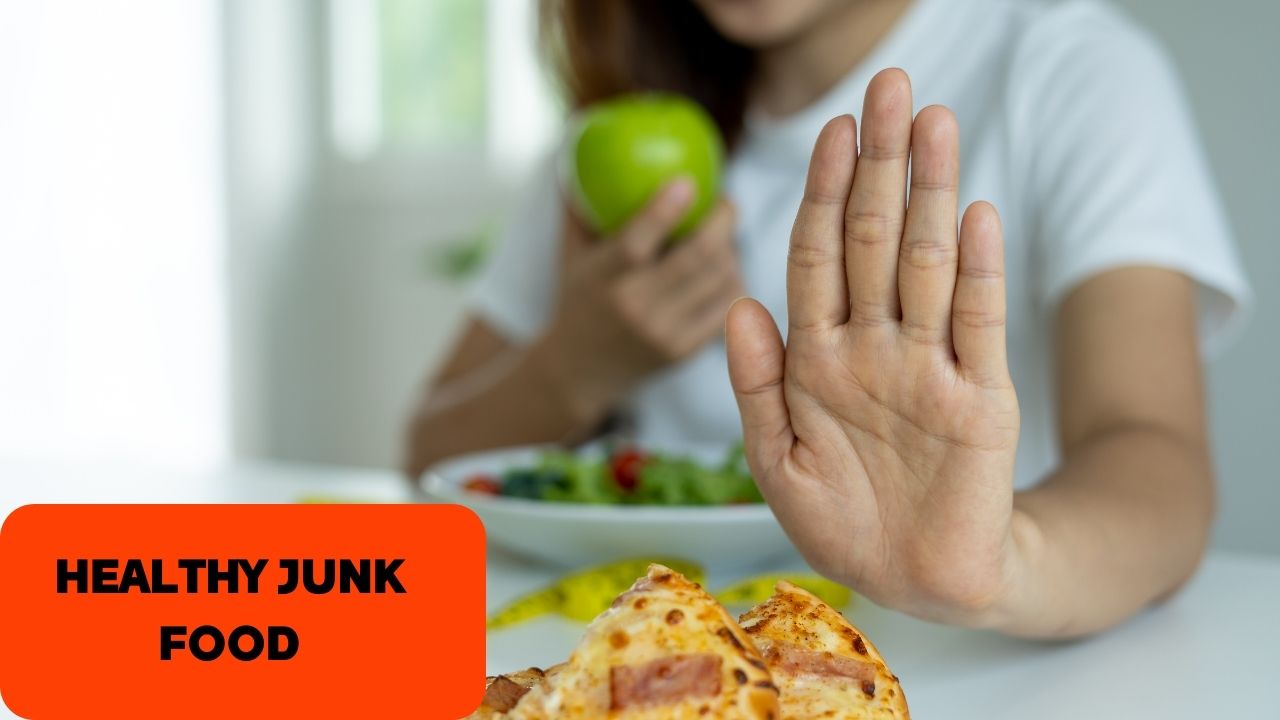In today’s fast-paced world, the term “healthy junk food” might sound like an oxymoron. However, with the growing awareness of nutrition and health, people are increasingly looking for ways to enjoy their favorite treats without compromising their well-being. This comprehensive guide delves into the concept of healthy junk food, compares it with traditional junk food, and provides insights into making nutritious meals look and feel indulgent.
Healthy Food Heart vs Junk Food Heart
The heart is one of the most vital organs in the human body, and its health is significantly influenced by our dietary choices. Consuming healthy foods rich in nutrients, fiber, and healthy fats can promote cardiovascular health, reduce inflammation, and lower the risk of heart disease. On the other hand, traditional junk food, which is often high in trans fats, sodium, and sugar, can lead to obesity, high blood pressure, and increased cholesterol levels, all of which are risk factors for heart disease.
Key Differences:
Also Read
- Healthy Food Heart: Consuming a diet rich in fruits, vegetables, whole grains, lean proteins, and healthy fats can lead to a stronger, healthier heart. These foods provide essential nutrients that support heart function and reduce the risk of cardiovascular diseases.
Read More–What Are the Signs of the Newest COVID Variant?
- Junk Food Heart: Regular consumption of junk food can lead to the buildup of plaque in the arteries, increasing the risk of heart attacks and strokes. The high levels of unhealthy fats and sugars in junk food can also lead to weight gain and metabolic syndrome.
Making Healthy Food Look Like Junk Food
The Art of Presentation
One of the challenges of adopting a healthier diet is the perception that healthy food is bland and unappetizing. However, with a little creativity, you can make nutritious meals look as enticing as their junk food counterparts.
Tips for Making Healthy Food Appealing:
- Use Colorful Ingredients: Incorporate a variety of colorful fruits and vegetables to make your dishes visually appealing.
- Experiment with Shapes and Sizes: Use cookie cutters to create fun shapes out of fruits, vegetables, and whole-grain bread.
- Add Texture: Combine different textures, such as crunchy nuts with creamy avocado, to make your meals more interesting.
- Garnish Creatively: Use herbs, spices, and edible flowers to add a touch of elegance to your dishes.
Junk Food vs Healthy Food
Nutritional Comparison
When comparing junk food and healthy food, the differences in nutritional value are stark. Junk food is typically high in calories, unhealthy fats, sugars, and sodium, while lacking essential nutrients like vitamins, minerals, and fiber. In contrast, healthy food provides a balanced mix of nutrients that support overall health and well-being.
Key Points:
- Junk Food: Often high in empty calories, leading to weight gain and nutritional deficiencies. Regular consumption can contribute to chronic health conditions such as diabetes, heart disease, and obesity.
- Healthy Food: Provides essential nutrients that support bodily functions, boost immunity, and reduce the risk of chronic diseases. A diet rich in healthy foods can also improve mental health and energy levels.
Healthy Food vs Junk Food
The Long-Term Effects on Health
The long-term effects of consuming healthy food versus junk food are profound. While healthy food can lead to a longer, more vibrant life, junk food can have detrimental effects on your health over time.
Long-Term Benefits of Healthy Food:
- Weight Management: Healthy foods are generally lower in calories and higher in fiber, helping you maintain a healthy weight.
- Disease Prevention: A diet rich in fruits, vegetables, whole grains, and lean proteins can reduce the risk of chronic diseases such as heart disease, diabetes, and cancer.
- Improved Mental Health: Nutrient-rich foods can improve brain function and reduce the risk of mental health disorders such as depression and anxiety.
Long-Term Risks of Junk Food:
- Obesity: High-calorie, low-nutrient foods can lead to weight gain and obesity.
- Chronic Diseases: Regular consumption of junk food can increase the risk of developing chronic conditions such as type 2 diabetes, heart disease, and certain cancers.
- Nutritional Deficiencies: Junk food often lacks essential nutrients, leading to deficiencies that can affect overall health.
FAQs
What Happened to Healthy Junk Food?
Healthy junk food has evolved over the years as food manufacturers and chefs have sought to create healthier versions of popular junk food items. This includes using alternative ingredients, reducing unhealthy fats and sugars, and increasing the nutritional value of these foods.
What Junk Food is Healthy?
Some junk food items can be made healthier by using alternative ingredients and cooking methods. For example, baked sweet potato fries, air-popped popcorn, and dark chocolate are considered healthier alternatives to traditional junk food.
Why Junk Food is Not Healthy?
Junk food is not healthy because it is typically high in unhealthy fats, sugars, and sodium, while lacking essential nutrients. Regular consumption can lead to weight gain, nutritional deficiencies, and an increased risk of chronic diseases.
What is Healthy Junk Food?
Healthy junk food refers to foods that mimic the taste and texture of traditional junk food but are made with healthier ingredients. These foods are often lower in calories, unhealthy fats, and sugars, while providing more nutrients.
What is the Most Healthy Junk Food?
The most healthy junk food options include baked sweet potato fries, air-popped popcorn, dark chocolate, and homemade veggie chips. These foods provide a healthier alternative to traditional junk food while still satisfying cravings.
Conclusion
The concept of healthy junk food is gaining traction as people seek to balance indulgence with nutrition. By understanding the differences between healthy and junk food, and learning how to make nutritious meals more appealing, you can enjoy your favorite treats without compromising your health. Remember, moderation is key, and making informed dietary choices can lead to a healthier, happier life.
Stay Connected With Google News

A passionate food writer with a deep commitment to promoting healthy eating habits, I create engaging and informative content that helps readers make better food choices. With a focus on nutrition, wellness, and practical tips, I share easy-to-follow recipes, health-conscious meal plans, and expert insights to inspire a balanced lifestyle. My mission is to make healthy eating accessible and enjoyable for everyone.





